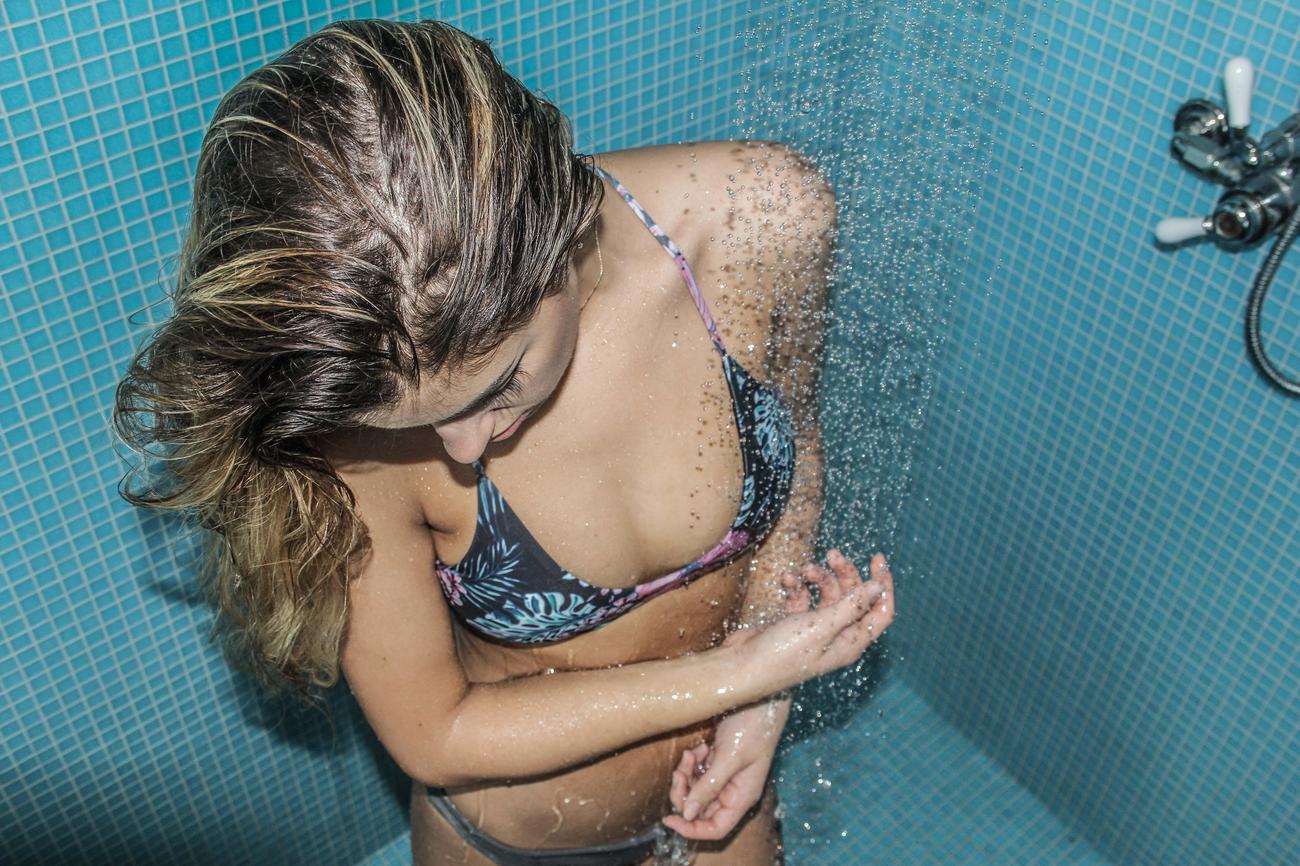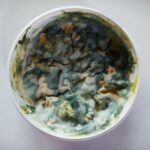If you have ever noticed unsightly black spots or a musty odor in your shower, chances are you have encountered the dreaded issue of shower mold. Not only is this a common nuisance in many homes, but it can also pose health risks if left unaddressed. In this article, “Effective Ways to Remove Shower Mold and Prevent its Return,” we will explore tried-and-tested methods to get rid of stubborn shower mold and provide practical tips to keep it from coming back. Whether you’re a homeowner or a renter, understanding how to tackle this problem is essential for maintaining a clean and healthy bathroom environment. So, let’s dive in and learn how to bid farewell to shower mold once and for all.

How to Get Rid of Mold in the Shower
Are you tired of dealing with stubborn mold in your shower? Don’t worry, I’ve got you covered! In this guide, I’ll share effective methods to remove shower mold and prevent its return. Let’s dive right in!
Identifying the Causes of Mold in Showers
Before we jump into the solutions, it’s important to understand what causes mold to grow in showers. Mold thrives in damp and humid environments, making your shower a perfect breeding ground. Factors like poor ventilation, water leaks, and lack of sunlight contribute to mold growth.
Preventing Mold Growth in Your Shower
Prevention is always better than cure, right? So, let’s start by discussing preventive measures to keep mold at bay:
- Proper Ventilation: Ensure your bathroom has adequate ventilation, either through a vent fan or an open window. This helps to reduce humidity and prevent mold growth.
- Regular Cleaning: Keep your shower clean by wiping away excess moisture and soap scum regularly. This removes any potential food source for mold.
- Fast Action Against Leaks: Fix any plumbing leaks promptly to prevent moisture buildup, as it provides an ideal environment for mold to thrive. Calling a professional plumber is recommended for complex leaks.
- Avoid Clutter: Reduce the number of items stored in your shower, such as bottles and loofahs. Clutter restricts airflow and promotes moisture retention, creating favorable conditions for mold growth.
Effective Mold Removal Techniques
Now that we’ve covered preventive measures, let’s focus on the key question: how to get rid of mold in the shower? Here are some highly effective methods to tackle mold:
Water, Vinegar, and Oil Solution: Create a powerful cleaning solution by mixing water, vinegar, and oil in a spray bottle. Spray the solution generously on the areas affected by mold and let it sit for at least five minutes. The vinegar’s acidity helps kill and prevent mold growth. Scrub the area gently with a brush, rinse with hot water, and thoroughly dry it. Repeat this process until the mold is completely gone.
Distilled White Vinegar: White vinegar is a versatile and affordable solution for tackling mold. You can use it in various ways:
- Dilute vinegar with water to clean tile floors, ensuring you maintain a safe ratio of vinegar to water.
- Apply undiluted vinegar directly on your showerhead, drain, or toilet to eliminate mold and mildew.
- For stubborn mold in shower caulking, pour vinegar into a spray dispenser and generously spray it on the affected area. Let it sit for some time, then vigorously scrub with a brush. Wipe down with a sponge and repeat as necessary until the mold disappears.
Remember to wear gloves and ensure proper ventilation when using vinegar, as its strong odor may be overwhelming.
The Importance of Regular Maintenance
Congratulations! You’ve successfully removed the mold from your shower. Now, let’s discuss how to prevent its return and ensure a mold-free environment.
- Daily Maintenance: To keep your shower mold-free, make it a habit to spray your shower walls and shower curtain with the water, vinegar, and oil solution every day. This helps to kill any lingering mold spores and inhibits their growth.
- Regular Deep Cleaning: Set a schedule for deep cleaning your shower to prevent the buildup of soap scum and grime, which can attract mold. Use appropriate cleaners and follow the manufacturer’s instructions.
- Keep Your Shower Dry: After each use, wipe down your shower walls and surfaces to remove excess moisture. Use a squeegee to remove water droplets, paying special attention to corners and crevices where mold may find a foothold.
Understanding the Health Risks of Mold
Being aware of the potential health risks associated with mold is crucial. Mold can cause allergies, respiratory issues, and irritate the skin and eyes. If you or your family members experience persistent symptoms such as sneezing, coughing, or watery eyes, seek medical advice. It’s important to address mold problems promptly to maintain a healthy living environment.
To summarize, by following these effective ways to remove shower mold and prevent its return, you’ll be on your way to a clean and mold-free shower. Remember to address any underlying causes, maintain proper ventilation, and take proactive measures to keep mold at bay. Happy cleaning!
“Say goodbye to shower mold with these proven methods!”
Did you know that mold can be found in every home? It’s true! Mold is a common issue that many homeowners face, but not everyone is aware of the potential dangers it poses. If you want to learn more about this fungus and how it can impact your health and home, check out our article on the top 10 facts about mold. You’ll discover some surprising information that might just make you rethink your cleaning routine. So, what are you waiting for? Click here to uncover the secrets of mold: 10 facts about mold
Shower Mold Removal: An Easy Solution for a Common Problem
[youtube v=”cq2H1dE7y_w”]
Mold in showers is a prevalent issue that affects many people. Mold growth occurs due to the accumulation of residue from our skin and other substances that are washed off during showers. Although some silicone seals claim to be mold and mildew resistant, the problem still persists. Many people spend a significant amount of time scrubbing and trying to remove the mold with little success. In this article, we will explore a simple yet effective technique to eliminate shower mold, along with preventive measures to keep it at bay.
Cleaning the shower mold can be done with a few readily available items. One of the key tools needed is a toothbrush, preferably an old one, which acts as a scrubbing tool. Additionally, having some bleach and loo roll (toilet paper) on hand is beneficial in the cleaning process. It’s important to note that when using bleach, check the manufacturer’s instructions to ensure it is safe for your shower tray material. If bleach isn’t suitable, there are other mold inhibitors that can be used.
To begin the cleaning process, use the old toothbrush to scrub the mold-affected areas. Make sure to focus on the silicone seal, which is often the main breeding ground for mold. Next, pour bleach gently down the back of the seal, ensuring constant contact with the mold. It’s advisable to wear gloves and other protective gear as recommended on the bleach packaging. After applying the bleach, leave it for a while before rinsing it off using clean water. This simple technique, when combined with daily use of a mold-preventing spray, can effectively eradicate shower mold.
In addition to cleaning, it is crucial to take preventive measures to avoid the recurrence of mold. Mold thrives in damp and humid environments, so proper ventilation is essential. Ensure there is good air circulation, especially after showers, by using extractor fans or opening windows. Promptly address any leaks and repair them to prevent moisture buildup. Furthermore, reduce clutter in the shower area to allow for better air circulation and light exposure, as mold grows more readily in dark and cluttered spaces.
Regular maintenance is also crucial in preventing the return of mold. Establish a daily routine of spraying the shower with a cleaning solution specifically designed to inhibit mold growth. Deep clean the shower periodically, paying close attention to corners and crevices where mold tends to develop. Additionally, keep the shower tray dry by wiping away excess water after each use. These simple yet effective measures will help maintain a clean and mold-free shower.
It’s important to address mold problems promptly as they can have negative effects on health. Mold can cause allergies, respiratory issues, and skin and eye irritation. By following the techniques and preventive measures outlined in this article, you can successfully remove and prevent shower mold, creating a healthier environment for yourself and your loved ones.
Remember, a clean and mold-free shower is not only visually appealing but also beneficial for your overall well-being. So, take the necessary steps today and enjoy a fresh and mold-free shower experience!
“Regular maintenance is the key to preventing mold growth and keeping your shower clean and mold-free.”

FAQ
Question 1: How do I effectively remove mold in the shower using natural ingredients?
Answer: You can mix water, vinegar, and oil in a spray bottle to create a cleaning solution for mold in the shower. Apply the solution to all areas that need cleaning and let it sit for at least five minutes. Scrub the area, rinse with hot water, and dry. To keep your shower mold-free, you can spray your shower walls and shower curtain with the solution every day.
Question 2: Can distilled white vinegar be used to clean mold in the bathroom?
Answer: Yes, distilled white vinegar can be used to clean mold in the bathroom. You can dilute it to clean tile floors or use it directly on your showerhead, drain, or toilet. It is an effective natural remedy for removing mold.
Question 3: How can I remove mold from shower caulking?
Answer: To remove mold from shower caulking, you can pour vinegar into a spray dispenser, spray the vinegar on the caulking, let it act, scrub with a brush, wipe down with a sponge, and repeat as necessary. This method helps to effectively eliminate mold from the caulking.
Question 4: Are these methods effective in keeping the shower mold-free?
Answer: Yes, the methods mentioned above are effective in getting rid of mold in the shower and keeping it mold-free. Regularly spraying your shower walls and shower curtain with a vinegar-based solution and maintaining proper cleaning practices can help prevent the return of mold.
Question 5: What other topics should I consider regarding mold in showers?
Answer: In addition to effective removal methods, it is important to cover topics such as preventing mold growth, understanding the causes of mold in showers, cleaning moldy shower curtains, and knowing the health risks associated with mold. These topics will provide comprehensive information on dealing with shower mold-related issues.
- Mastering Leader in Spanish: The Complete Guide - April 19, 2025
- Uncovering Surprising Parallels: England Size Compared to US States - April 19, 2025
- Old Mexico Map: Border Shifts 1821-1857 - April 19, 2025
















